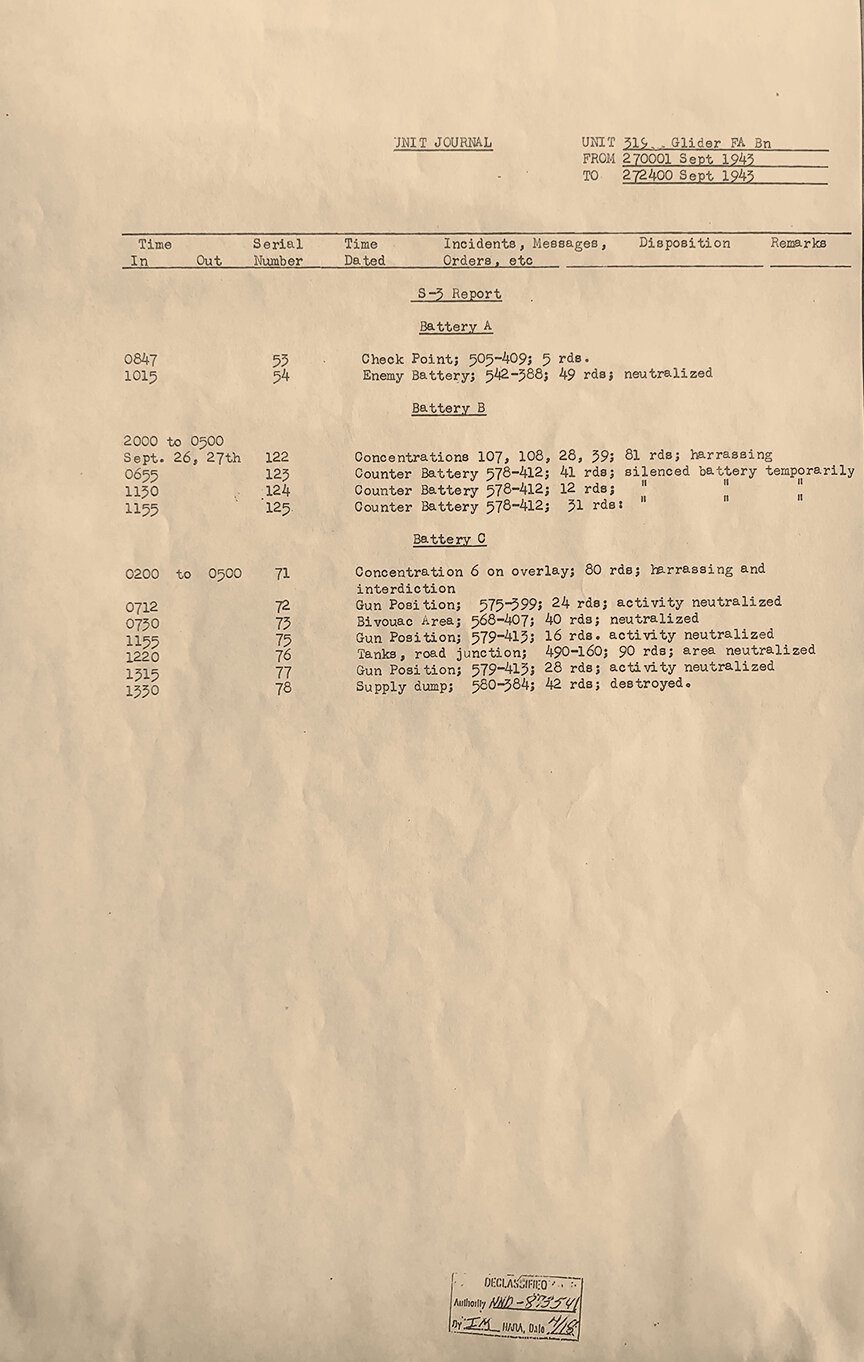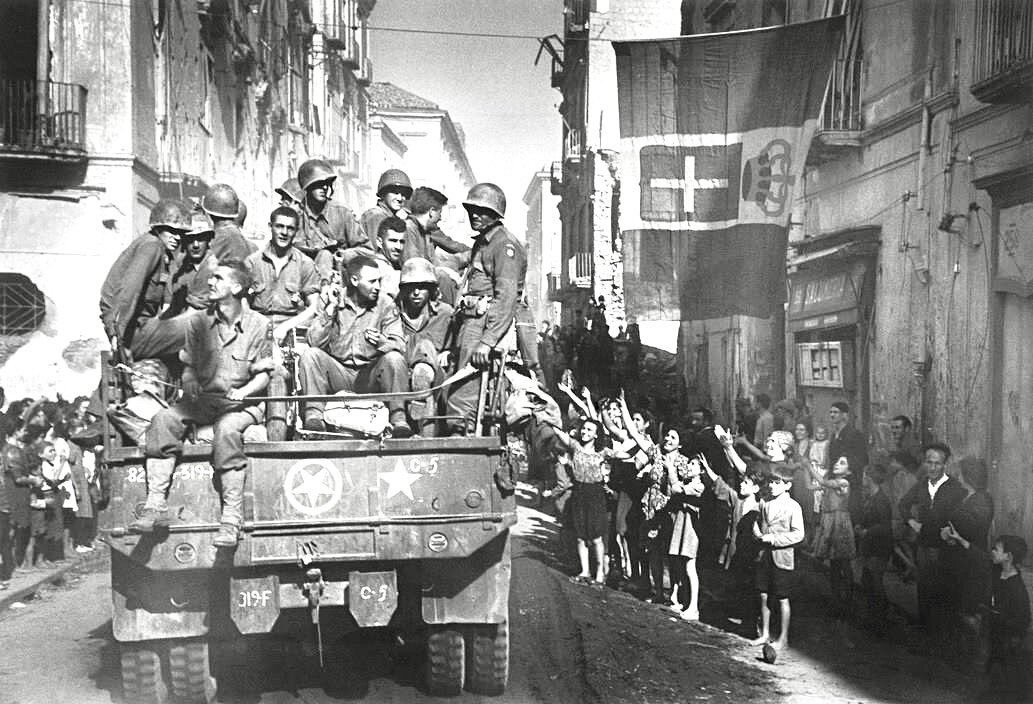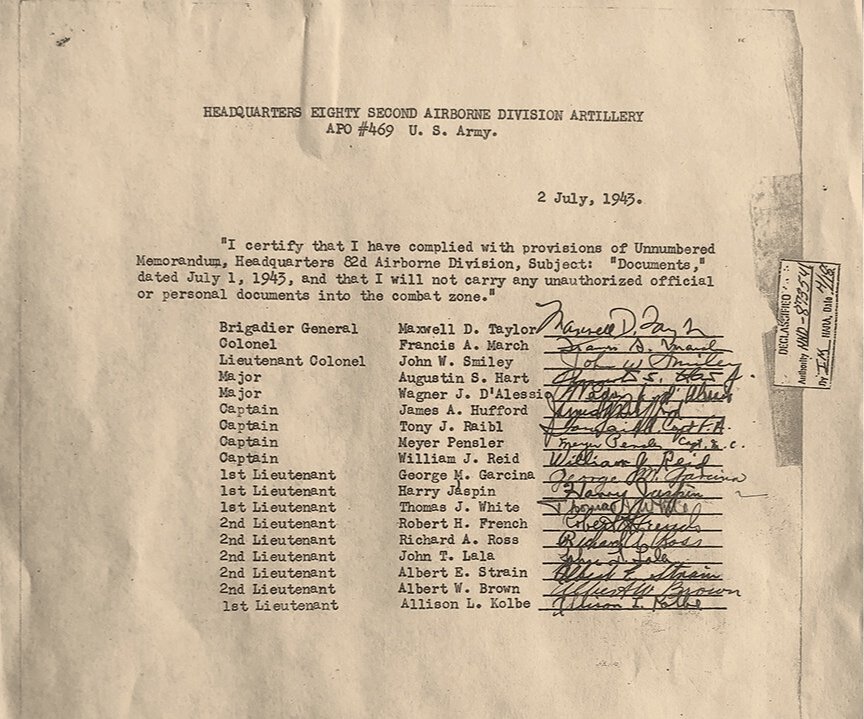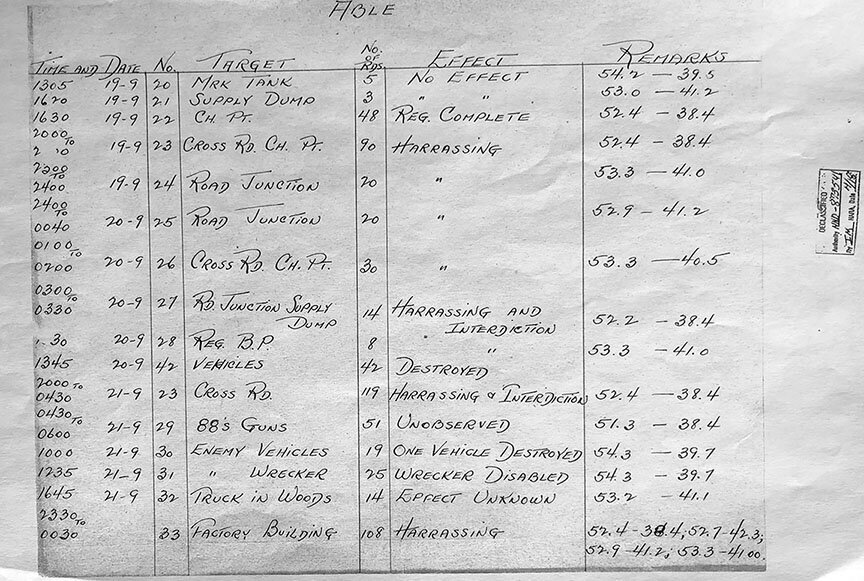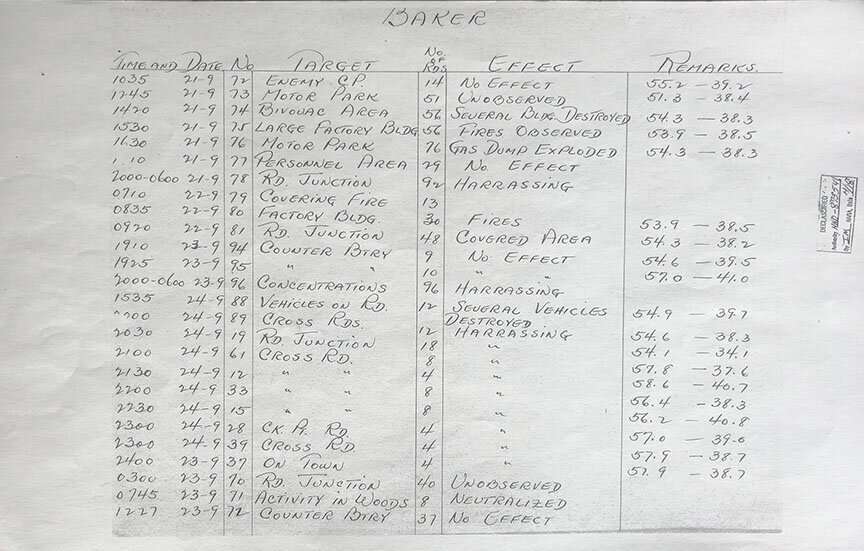Italy 1943
On September 6, 1943 the 319th Glider Field Artillery Battalion was bivouacked on a North Africa beach ten miles north of Bizerte, Tunisia. That day, orders were received to proceed to a staging area to embark by sea in connection with the Giant 2 Operation.
The following day together with the 504th Parachute Infantry, elements of the 80th Anti-aircraft Battalion and the 307th Engineers, the Battery boarded one of three LCI’s and LST. They sailed September 8 and once at sea were ordered to the command Ship Ancon in the Gulf of Salerno.
On September 11 the Battalion received orders from the Commanding General, 5th Army, to land immediately at Maiori, Italy, with the mission of supporting an existing Ranger force. That evening the battalion landed on the beach at Maiori and immediately occupied a mountainous position 5 miles north of the beach known as the “Chiunzi Pass,” later as the “88 Pass.”
The battalion was in direct support of the 1st Battalion Rangers, Lt. Col. William O. Darby, CO and commenced firing the early morning of September 12, 1943. For the next 19 days the 319th fired more than 12,000 artillery rounds over the mountain range and through the pass targeting truck columns, troop movement and supply dumps, road junctions, enemy 88 gun positions and ammo supplies, tanks and rocket batteries as well as other enemy activity along Highway 18 just outside of Naples.
Commemorative plaque and monument to Col. William Darby and Ranger Bn - Maiori, Italy
The following is the official declassified September 1943 Unit Journal of the 319th Glider FA BN, S-3 Report/Summary, Action/Casualty reports, artillery missions/results and supporting photographs.
(Click on tabs below to access each section of the report)
319th Glider Field Artillery
Unit Journal
September 1943
(see below presented by date in a slideshow fashion - side controls to the next or previous image)


Maiori Beach unloading ammunition and supplies - September 1943
Bofors 40mm AA Gun Protecting the Maiori Beach - September 1943
LCT 392 unloading at the Maiori beach - September 1943
Maiori citizens young and old assist with the unloading
View of the Maiori beach looking north - September 1943
Active beachhead at Maiori - men and equipment - September 1943
Then and now, Maiori beach, Italy
Photos courtesy of the John Connelly family and Joseph Covais, author of BATTERY
(slideshow, side controls to next image)

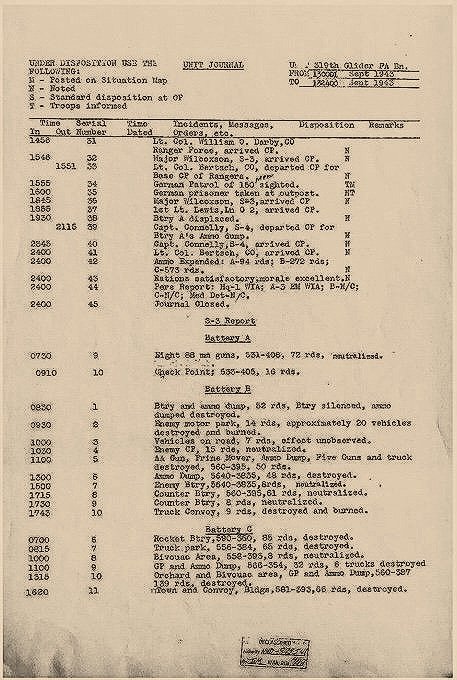
Then and now “Chiunzi Pass” and 82nd Airborne digging in.
View of Naples and Mt. Vesuvius from the “Pass”
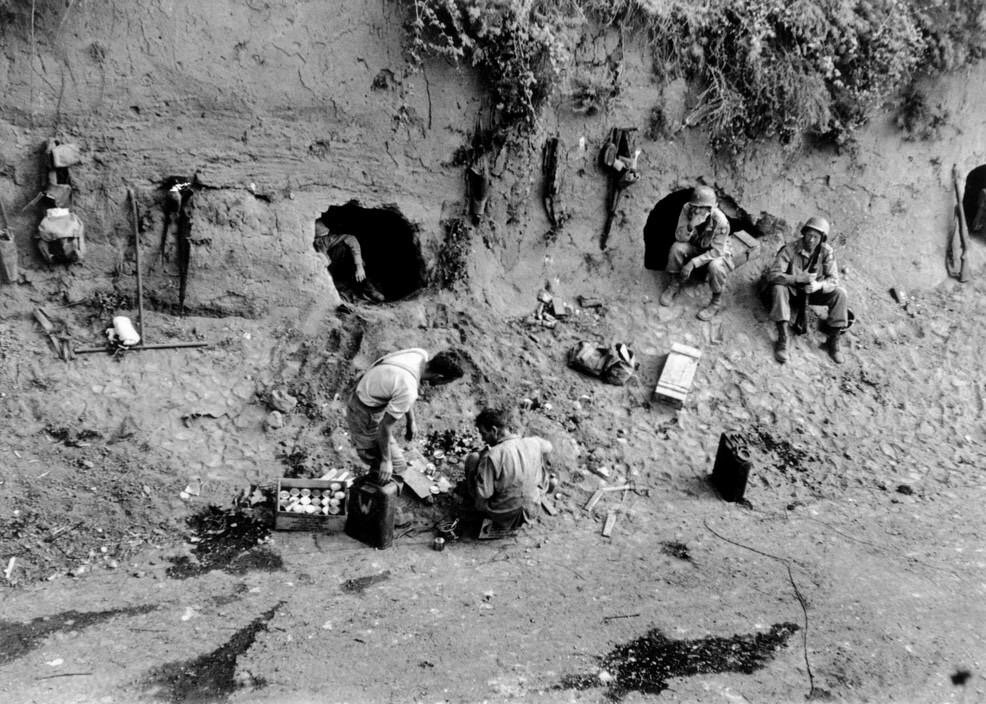
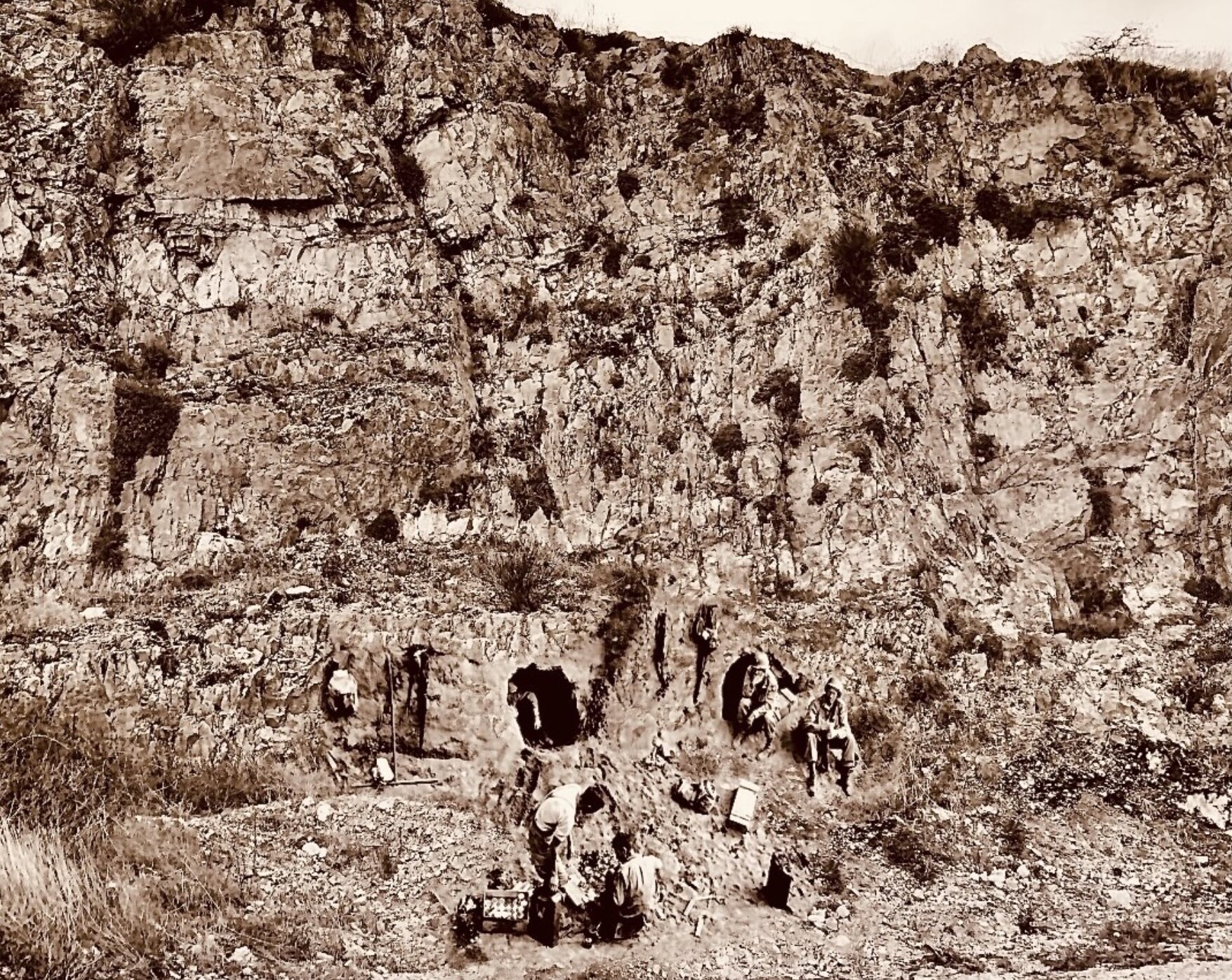
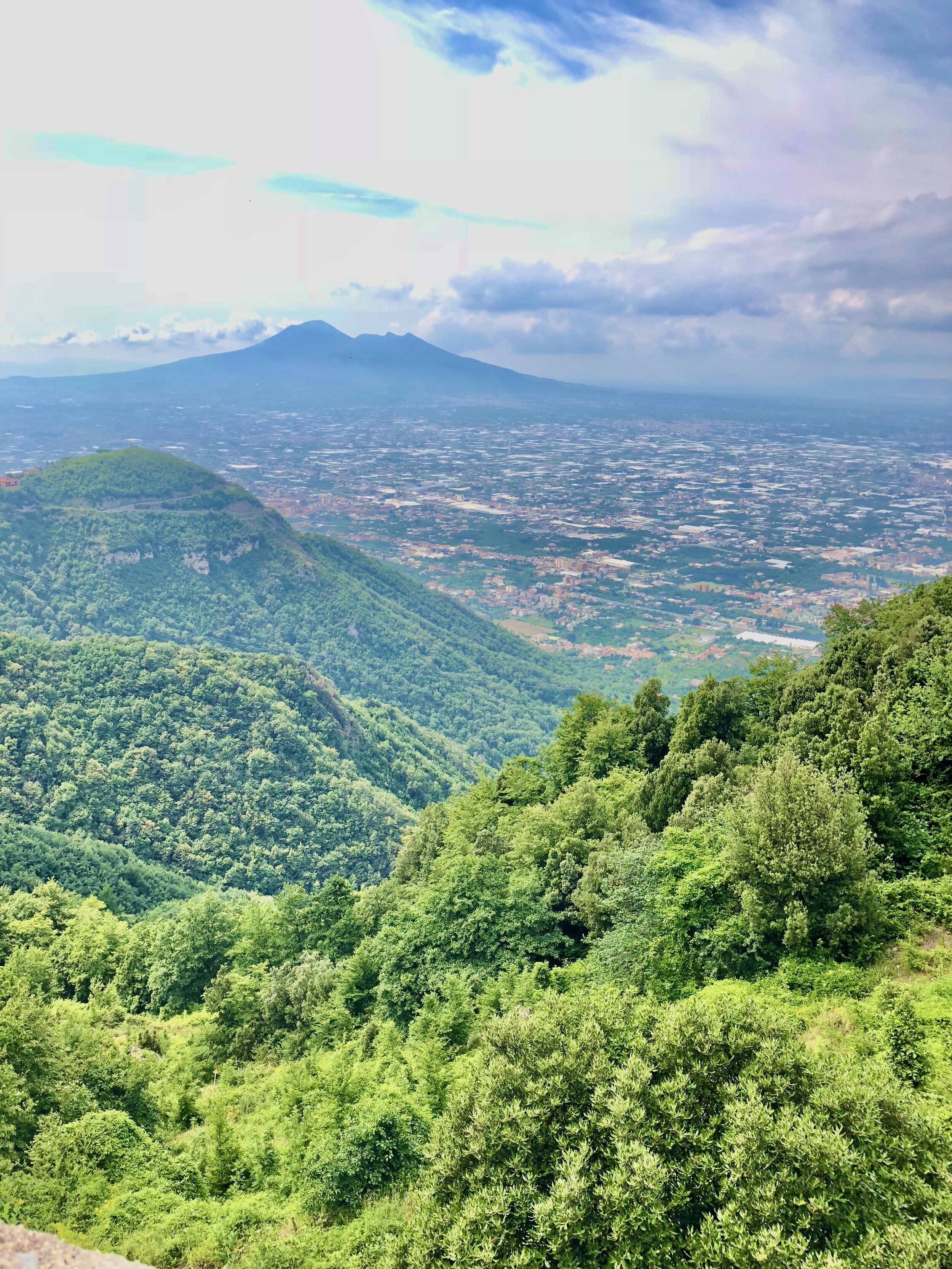

(slideshow, side controls to next image)






Rounds Overshooting the Beach
Enemy artillery rounds overshot Maiori Beach falling into the Tyrrhenian Sea.


(slideshow, side controls to next image)


(slideshow, side controls to next image)




(slideshow, side controls to next image)
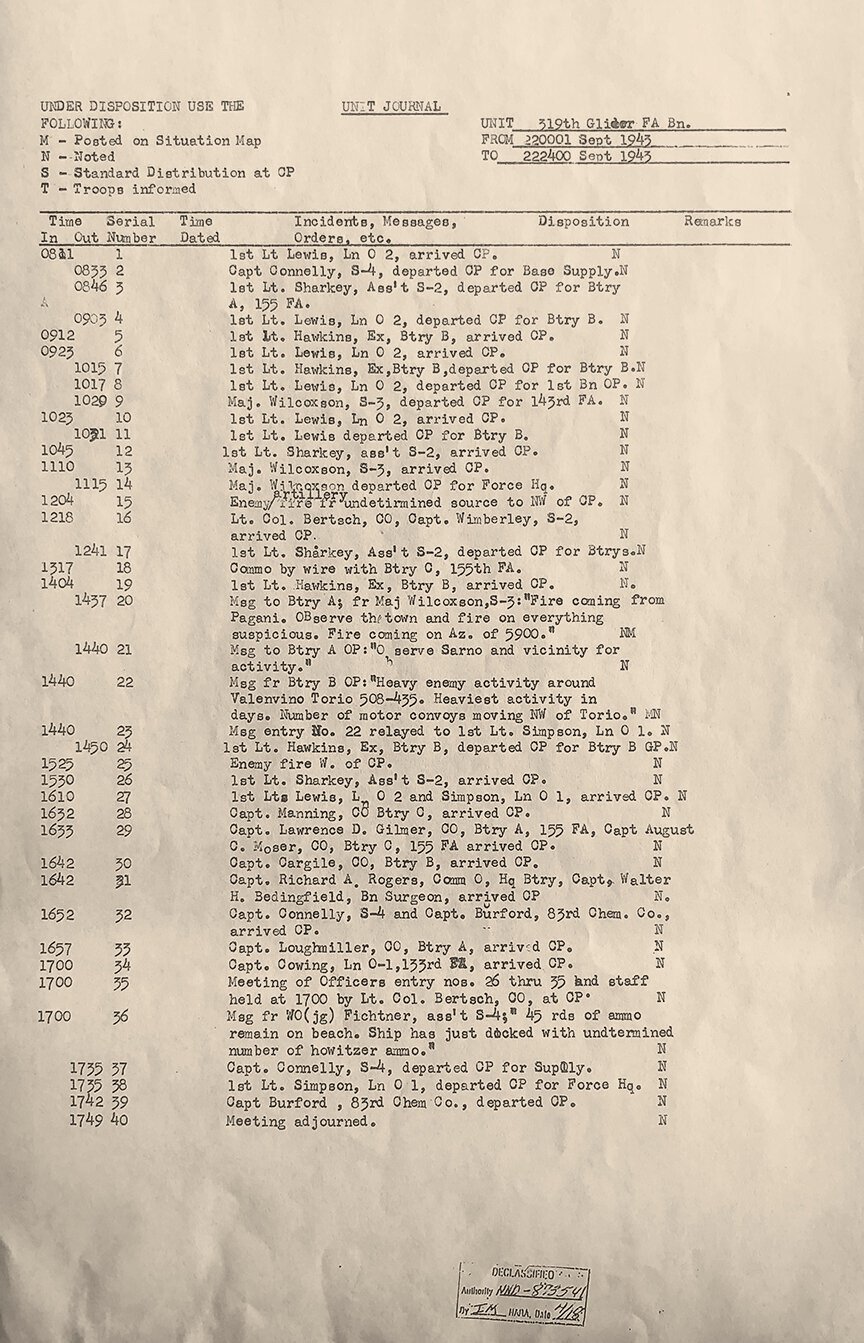
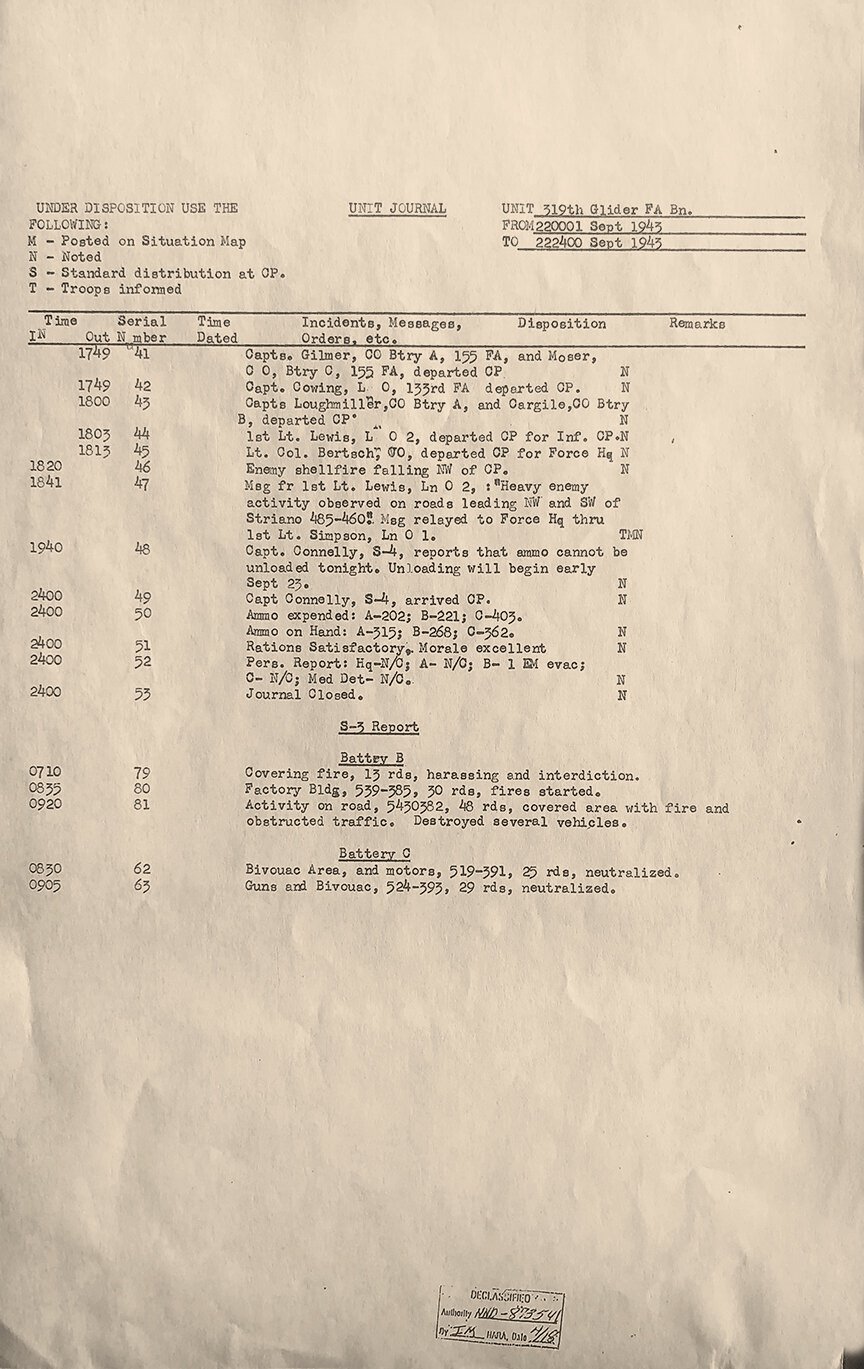
View looking north
Maiori Beach - 1943


(slideshow, side controls to next image)

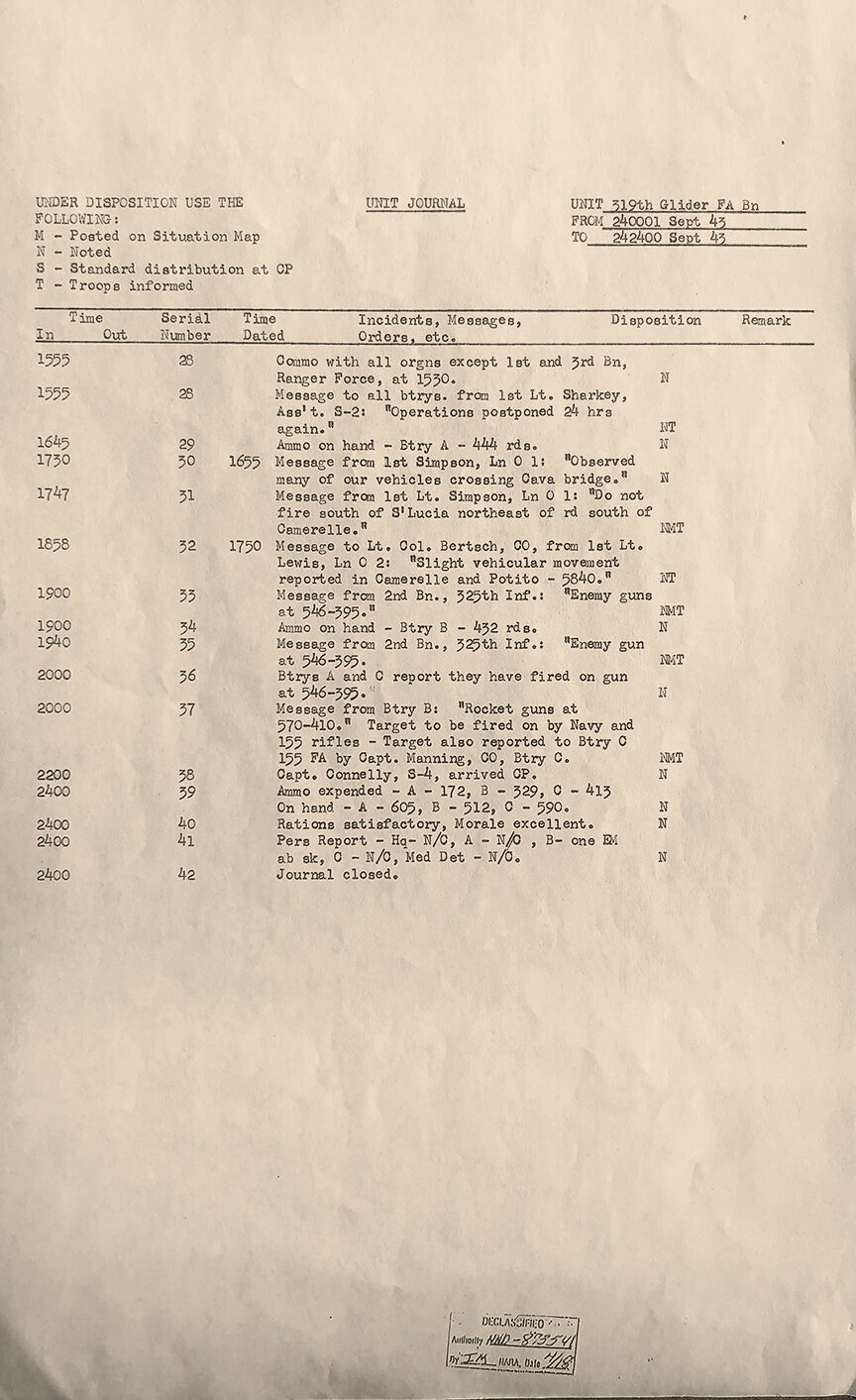
Patrolling the Chiunzi Pass
Rangers patrolling the Chiunzi Pass above 319th firing positions.
Evacuating Wounded
Wounded soldier evacuated from the Chiunzi Pass.
(slideshow, side controls to next image)
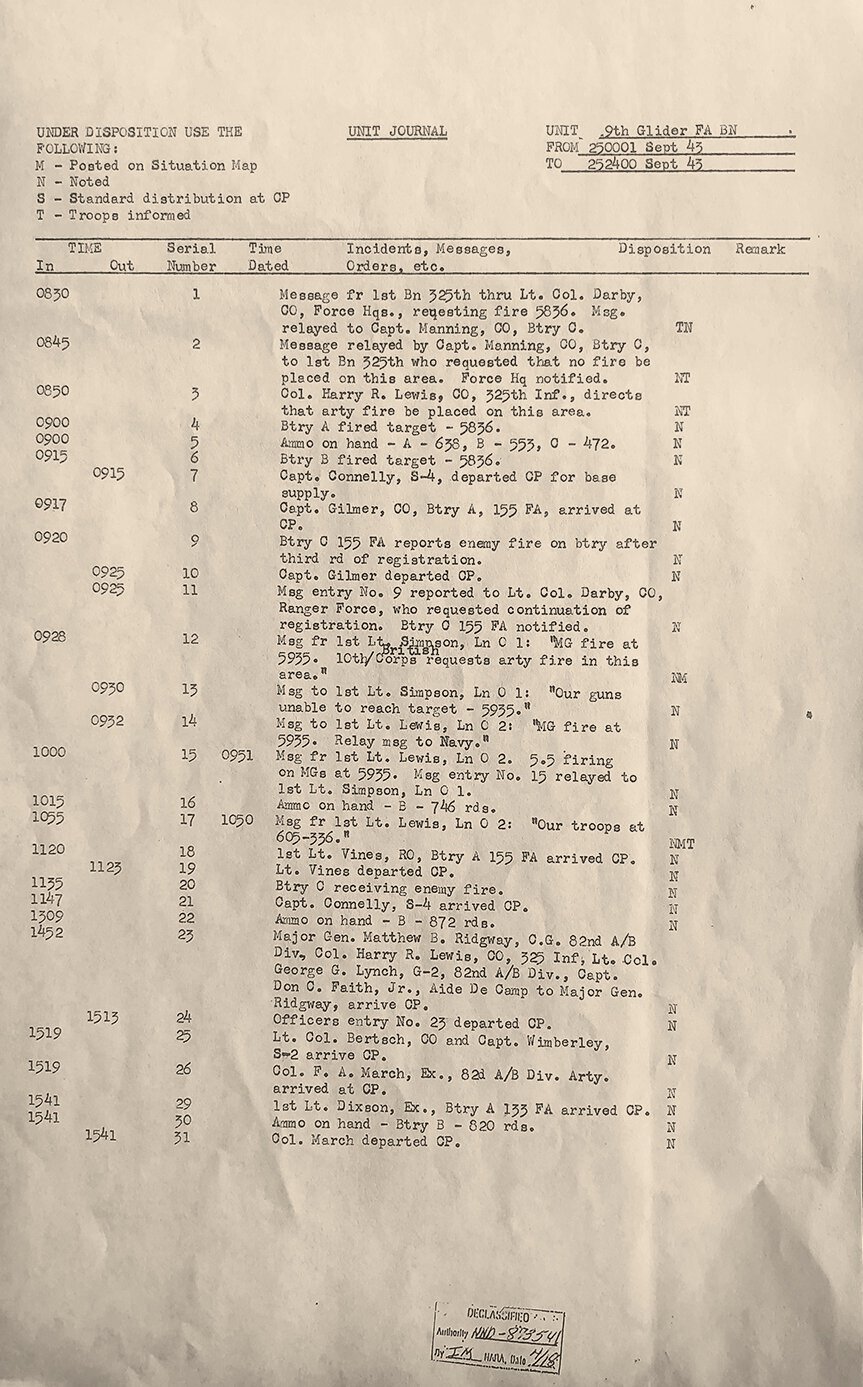

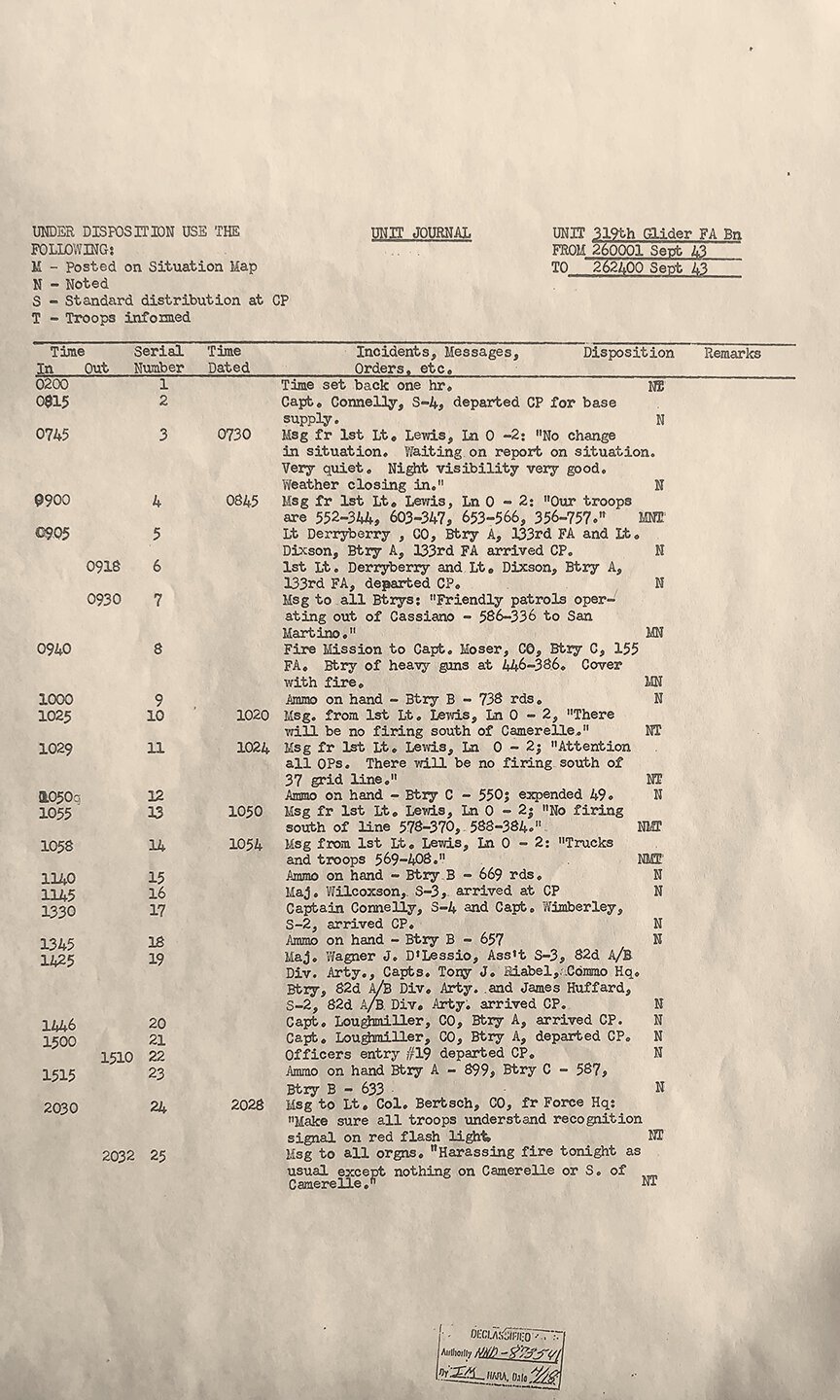

(slideshow, side controls to next image)
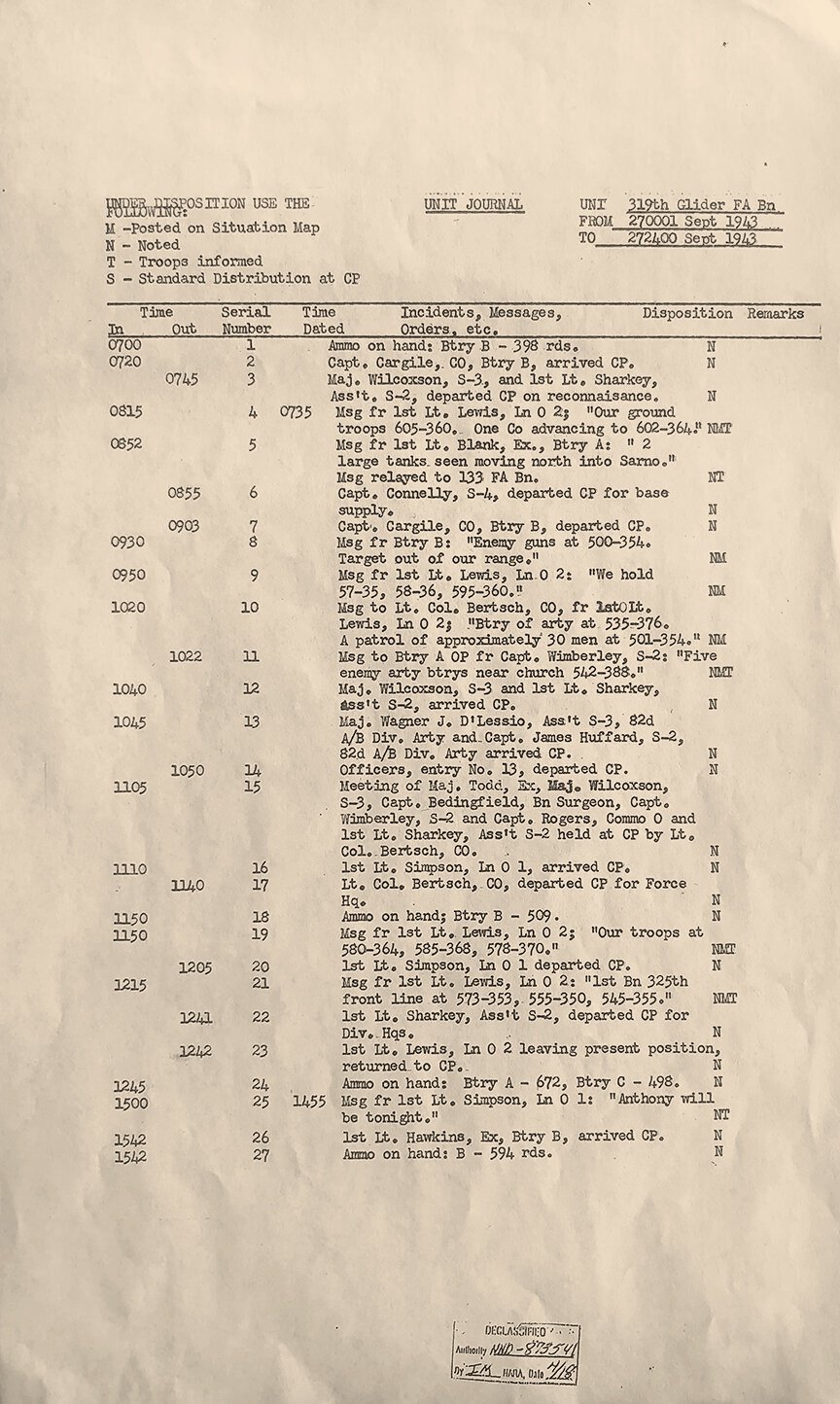
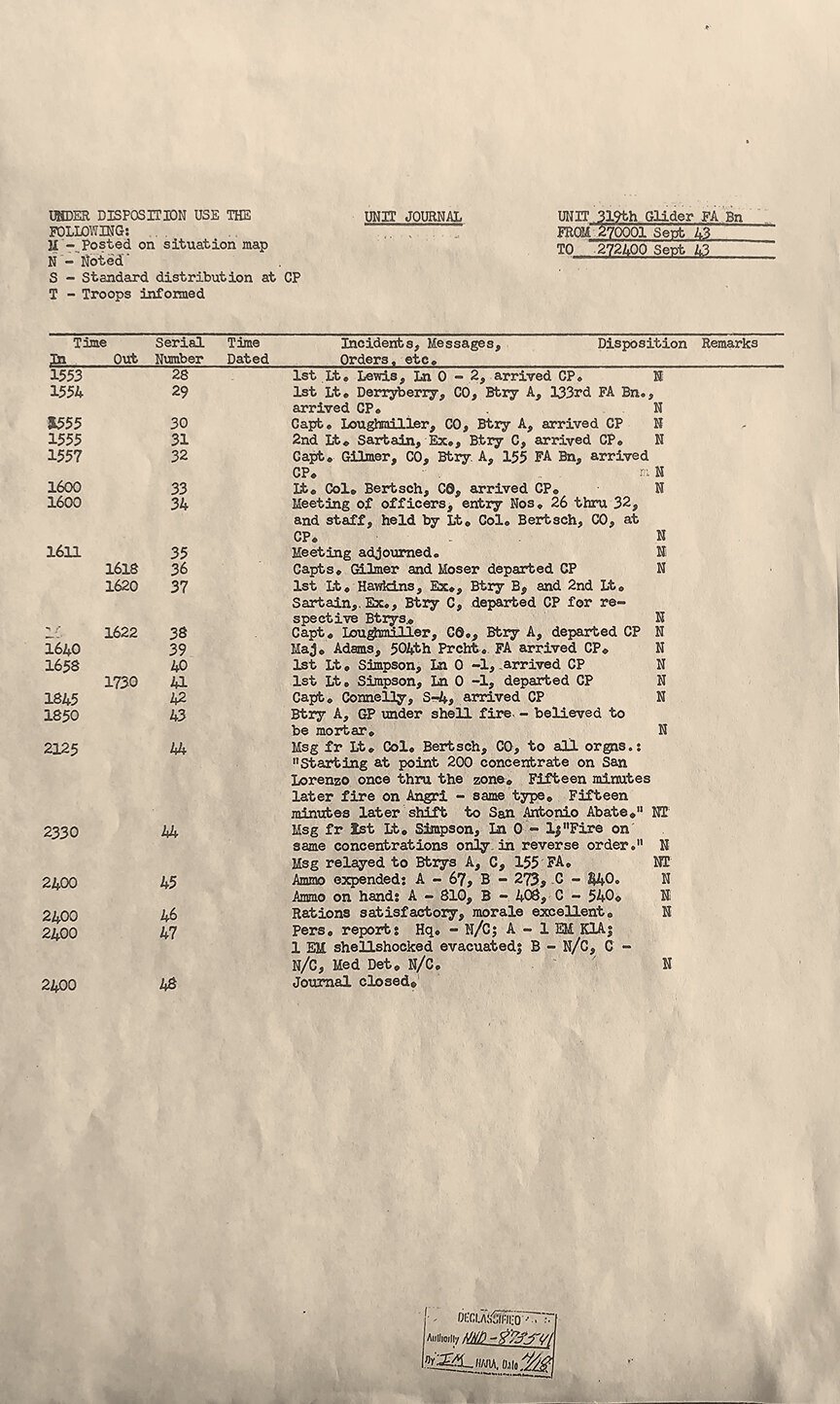
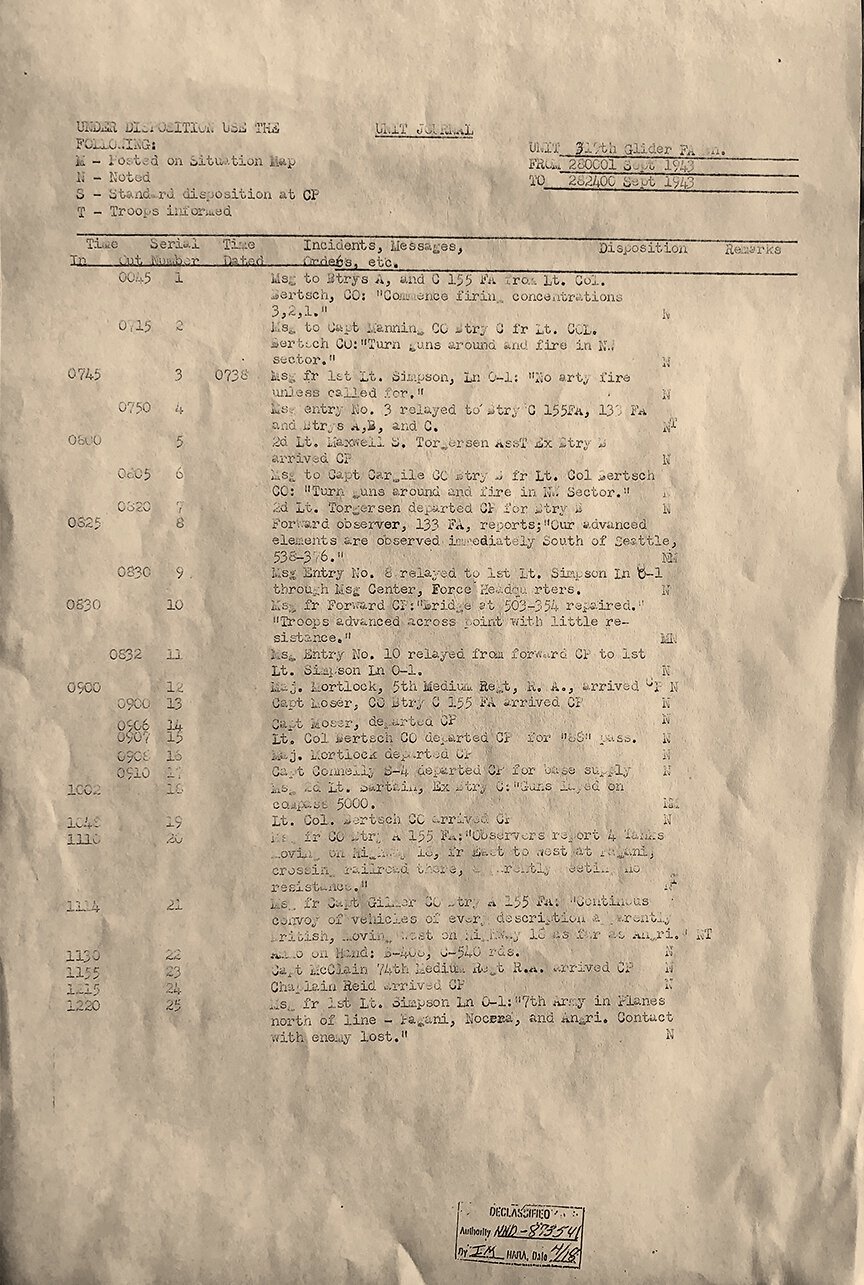
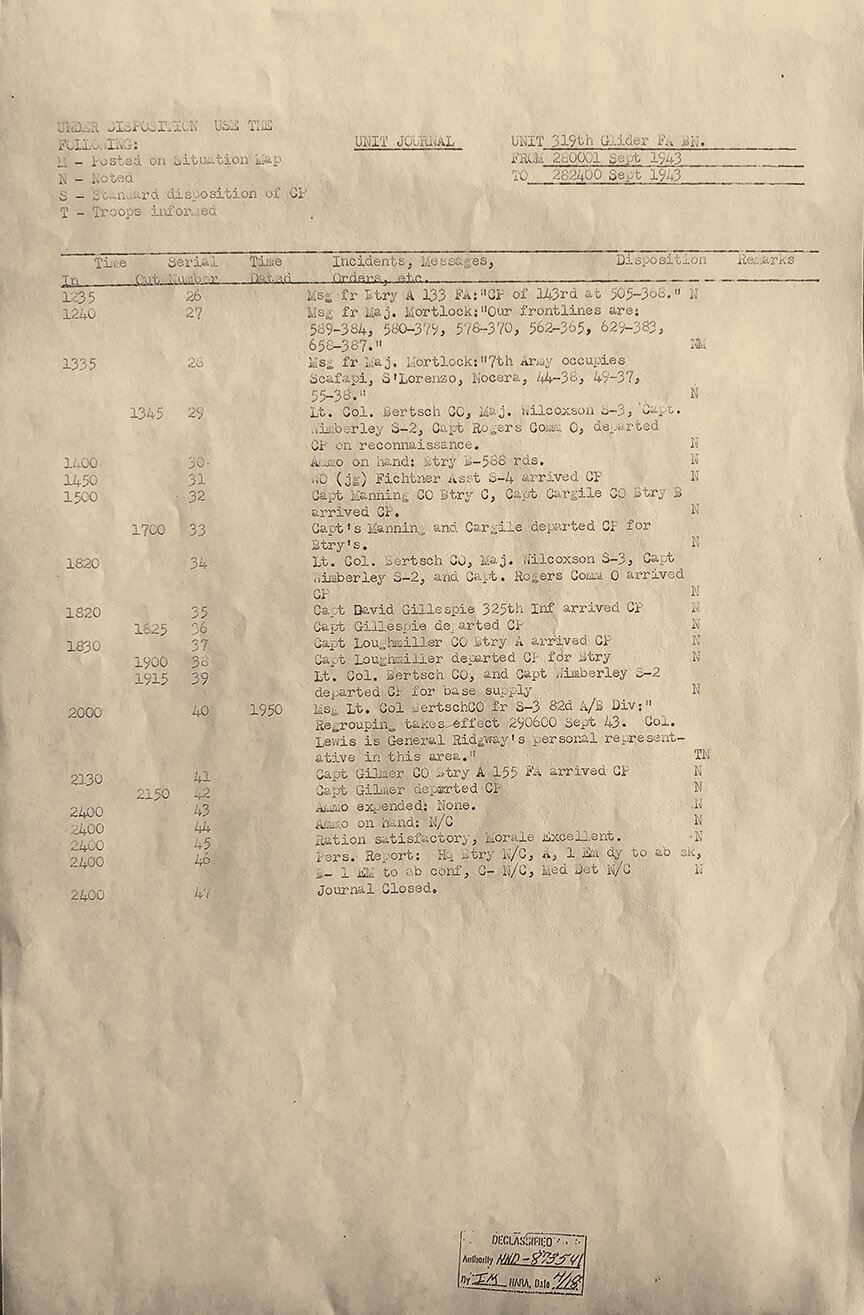

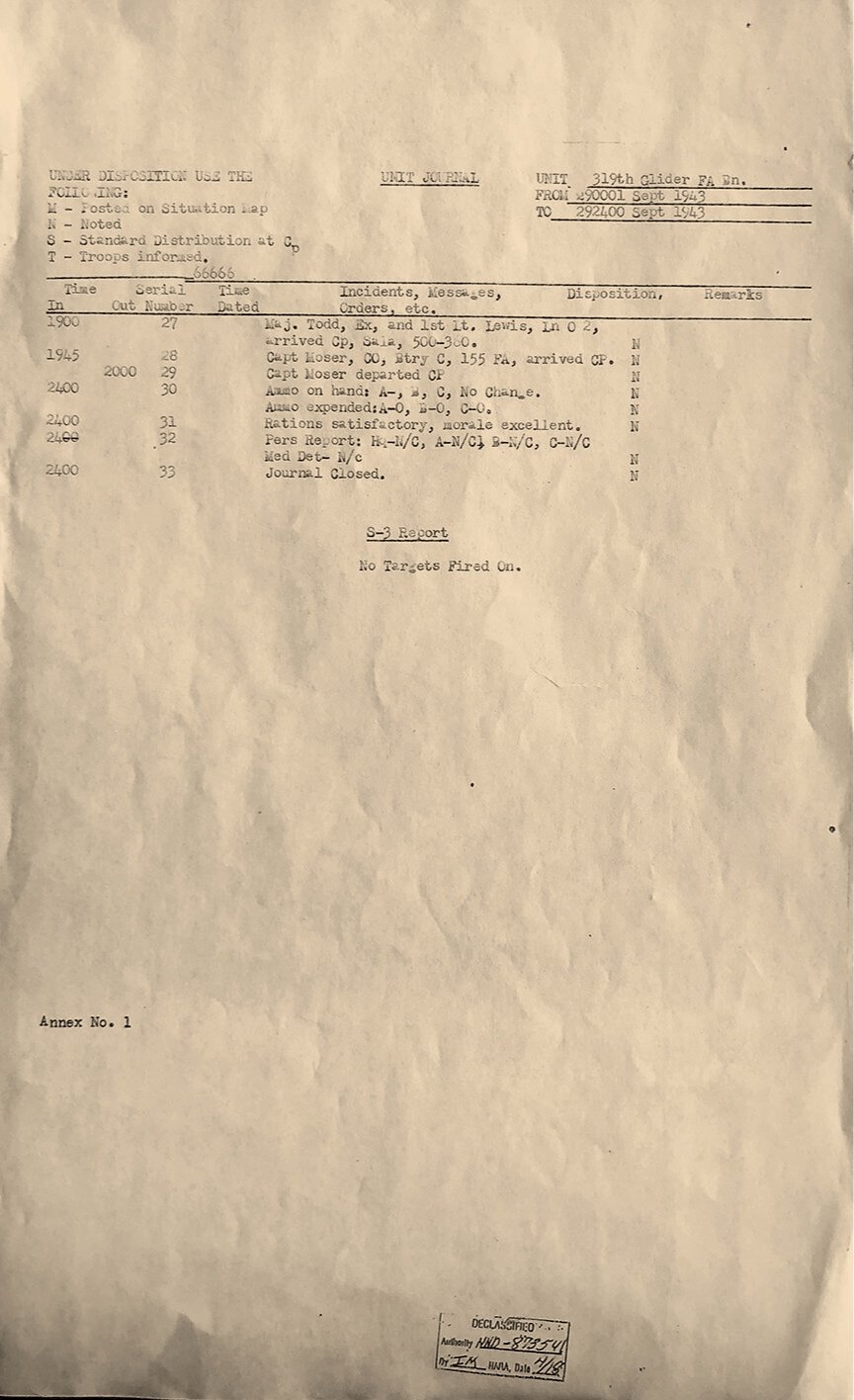
October 1, 1943
Capt. Manning (front passenger) driver Louis Sosa and Salvatore “Ted” Covais lead the 319th into Naples, Italy.
“C” Battery entering Naples
The men of (gun section 5) “C” Battery 319th Field artillery and the 82nd Airborne enter Naples after bivouacked the prior evening in the destroyed town of Torre Annunziata.
Historical Record - October 1943
HEADQUARTERS 319TH GLIDER FIELD ARTILLERY BATTALION
APO #469, U.S. Army
HISTORICAL RECORD 319TH GLIDER FA BN FOR OCTOBER 1943
On September 30, the battalion was in bivouac in the vicinity of Castellamare. At 2100 hours, on that date, verbal orders were received form the Division Commander, to move the battalion forward to the vicinity of Torre Annunziata with the mission of supporting the 505th Parachute Infantry which, at that time, was assisting the British 23rd Armored Brigade in the approach to Naples.
The Battalion Commander, S-2 and S-3, proceeded to Torre Annunziata where instructions were received from the Brigadier commanding the 23rd Armored Brigade, covering the situation and position area to be occupied. The S-2 returned to the bivouac area and guided the battalion forward to a rendezvous area in the vicinity of the main street intersection in New Pompeii, arriving at 0330 hours, October 1.
The Executive and the Battery Commanders with their parties reported to the Battalion Commander at the Command Post which was then located in the railroad station at Torre Annunziata. (see overly). The 505th Parachute Infantry will attack at 0900 hours, October 1, driving the enemy to the north. The mission of the battalion was to support the 505th Parachute Infantry. In compliance with the Battalion Commander’s order the batteries occupied positions selected by the Executive, as shown on overlay, prior to the hour of attack.
The CP was moved forward and placed just opposite the 505th CP (see overly). At 0830 hours advance patrols of the 505th Infantry reported that the enemy had abandoned our objective and units of the 23rd Armored Brigade followed closely by the 505th Parachute Infantry and this battalion, moved forward into Naples without opposition. After arriving in Naples, the battalion immediately went into reserve at the city’s railroad station. Enemy troops were still reported in the north part of the city, and armed mobs of Italian civilians were numerous. On October 2, the battalion moved to its assigned area and began its mission of police. Many arms, ammunition, and demolitions were taken from willing civilians.
On the morning of October 4, on VOCG, the battalion broke bivouac and prepared to move forward to Villa Literno, and support the 505th Parachute Infantry. At 1600 hours the battalion moved forward toward Villa Literno, but found the road blocked by vehicles just south of Qualiano. Orders were received from the Commanding Officer, 505th Parachute Infantry to bivouac for the night and to move forward into position as soon as the crowded road would permit. The battalion stayed alongside the road for the remainder of the night.
At dawn on October 5th, the battalion moved forward to a rendezvous, along the road three miles south of Villa Literno. At 1500 hours, Lt. Col. Bertsch was ordered back to Naples and on VOCG, Major Todd, Executive, assumed command of the battalion. At nightfall the road was cleared sufficiently to allow the battalion to move forward over three difficult diversions to Villa Literno. The battalion executive had selected positions on a previous reconnaissance, and the batteries moved into position at dawn of October 6.
Early on October 6, the mission of the 505th, supported by this battalion was as follows: Hold defensive positions along the canal Regi Lani and await arrival of infantry units of the 46th Division (British). Due to heavy friendly patrols operating as far north as the Volturno River, none of the batteries were able to fire, maximum range being just south of the river.
Battery “C” was immediately displaced to a forward position (see overlay) to cover these friendly patrols. Forward observers of this battalion pushed forward to the town of Arnone and encountered heavy enemy artillery fire. Since they were beyond maximum range, all forward observers except Battery “B” observer who was adjusting some British 25-pounder batteries, moved back to the MIR. Lt. Fitzgerald, the Battery forward observer was killed this day while overseeing the safe evacuation of this personnel from the town during an enemy counterattack.
During this night an enemy patrol of fifty men broke through and penetrated to Battery “C’s” position but were forced to retreat before any damage was done. The battalion CP was heavily shelled at intervals during the afternoon and most of the night.
Activity October 7 was confined to Battery “C”, the only battery to fire during the whole mission. Enemy activity was confined to patrols which were kept pinned down or scattered by this fire all during the day. At 1300 hours the Battalion Commander reported to 505th CP and received orders to prepare to move back to Naples at dawn on October 8. Infantry and artillery elements of the 46th Division (British) moved into position at 0630 hours October 7 and the 505th Parachute Infantry together with this battalion commenced withdrawal at dusk to bivouac area.
At dawn, on October 8, this battalion was released from combat team control and began the return march to Naples, arriving in its assigned area at 0815. After two days of cleaning equipment and materials the battalion again took up its mission of patrol and police in the city of Naples.
JAMES C. TODD
Major, FA
Comdg.
Casualty Report
September, 1943
Note; Pfc. Ray Lampley, 37185441 from SWA to KIA 14 Sept. 1943
Artillery Missions and Results
Report of Major James Wilcoxson
October 16, 1943
A-Battery Fire Missions
B-Battery Fire Missions
C-Battery Fire Missions






















